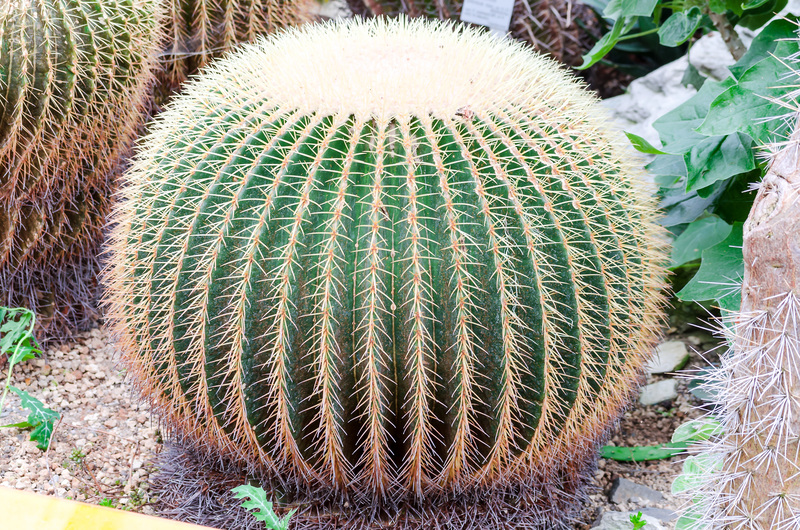Orchid Care Made Easy for Everyone
Posted on 19/06/2025
Orchid Care Made Easy for Everyone: The Ultimate Guide
Orchids have long captivated plant lovers with their exotic beauty and incredible variety. Due to their striking appearance and unique growth habits, many people believe orchid care is complicated and best left to experts. However, caring for orchids at home can be straightforward--and extremely rewarding--when you know the essentials. This comprehensive guide will demystify orchid maintenance, offering practical tips for easy orchid care, regardless of your experience level.

Understanding Orchids: A Quick Overview
Before delving into maintenance, it's useful to understand orchids. The Orchidaceae family is one of the largest in the plant world, boasting over 25,000 species. Orchids grow in a variety of environments across the globe, from tropical rainforests to arid deserts.
- Epiphytic orchids (e.g., Phalaenopsis, Cattleya) grow on trees and absorb moisture from the air.
- Terrestrial orchids (e.g., Cymbidium, Bletilla) grow in soil like typical houseplants.
- Lithophytic orchids grow on rocks or in crevices.
The vast majority of homegrown orchids belong to epiphytic types, famous for their spectacular blooms and long-lasting flowers.
The Fundamentals of Easy Orchid Care
1. Lighting Needs for Orchids
Light is one of the most important elements for growing orchids successfully. Most common orchids, like the Phalaenopsis or "moth orchid," thrive in bright but indirect light.
- Indoors: Place orchids near an east- or west-facing window. Filter direct sunlight with a sheer curtain to prevent leaf burn.
- Signs of too much light: Yellowed or scorched leaves.
- Signs of too little light: Dark green leaves and failure to flower.
If your space lacks natural sunlight, consider using a grow light specifically designed for indoor plants.
2. Watering Orchids Properly
Watering is where many new orchid owners struggle. Orchids don't like sitting in water--overwatering is the most common reason for orchid decline.
- Frequency: Water your orchid once a week in most home environments. In hotter, drier climates, you might need to water more frequently.
- Test the medium: If the potting mix feels dry an inch below the surface, it's time to water.
- Best method: Remove the orchid's plastic pot and run water through the roots for about a minute. Allow all excess water to drain off before returning the plant to its decorative pot.
Avoid letting water pool at the bottom of the pot, as this can lead to root rot.
3. Choosing the Right Potting Media
Orchids have unique root systems and require a well-draining orchid mix--not regular potting soil. Common ingredients for orchid media include:
- Bark chips: Provide airflow and mimic the tree-borne habitat of many orchids.
- Sphagnum moss: Retains moisture while allowing roots to breathe.
- Perlite or charcoal: Enhances drainage and prevents compaction.
Choose a potting mix suited to your specific orchid's needs, and repot every 1-2 years to refresh the medium and promote healthy root growth.
4. Humidity and Temperature Considerations
Most orchids originate from humid environments. For optimal health, strive for humidity levels of 40%-70%.
- Increase humidity by placing your orchid's pot on a tray filled with pebbles and water (keep pot above waterline) or using a room humidifier.
- Ideal temperature range for common orchids: Daytime 65-80?F (18-27?C); Nighttime 55-65?F (13-18?C).
- Keep orchids away from cold drafts and heaters/vents, which can stress the plant.
5. Feeding and Fertilizing Orchids
While orchids are light feeders, regular nutrition boosts healthy leaves and abundant flowers.
- Use a balanced, water-soluble orchid fertilizer (20-20-20 or similar) at half strength.
- Feed once a month during the growing season (spring and summer); cut back during winter.
- Flush the potting mix with plain water every few months to prevent salt buildup.
Orchid Care Tips for Beginners
Easy Orchid Varieties for Novices
If you're new to orchids, start with varieties known for their reliability and resilience. Popular options include:
- Phalaenopsis (Moth Orchid): Blooms for months, tolerates varied conditions, and is widely available.
- Cymbidium: Produces multiple spikes and tolerates cooler temperatures.
- Dendrobium: Flowers in a variety of colors, easy to grow indoors.
- Oncidium: Known as "Dancing Ladies," offers abundant blossoms and appealing fragrance.
Common Orchid Problems and Solutions
Even with the best orchid plant care, challenges occasionally arise. Here are some tips to tackle issues:
- Leaf spots or mold: Increase air circulation and avoid wetting the leaves. Trim off affected parts with sterilized scissors.
- No flowers: The plant may need more light or a pronounced temperature drop at night to encourage blooming.
- Yellow leaves: Most often due to overwatering or low humidity. Adjust your watering routine and environment.
- Wilting leaves: Check for root rot or underwatering--inspect the roots and adjust accordingly.
How to Repot Your Orchid
Repotting is essential for orchid health. Here's how to do it easily:
- Choose the right time: Repot after flowering or if the potting mix breaks down.
- Gently remove the orchid: Tap the pot's sides and tip the plant out. Gently loosen roots and remove old media.
- Trim damaged roots: Use sterilized scissors to remove mushy or dead roots.
- Place in a new pot: Use a clean orchid pot (with drainage holes) and fresh orchid mix.
- Settle roots and media: Work bark pieces around the roots, supporting the plant so it stands upright. Water thoroughly after repotting.
Blooming and Re-Blooming: Orchid Flower Care
A unique challenge of orchid care is encouraging repeat flowering. With proper attention, most houseplant orchids will rebloom annually.
After-Flowering Orchid Care
- Phalaenopsis orchids: After blooms fade, trim the spike above a node ("eye") about halfway down. This can stimulate new branch growth and another round of blooms.
- Other types: For Dendrobium, Oncidium, and Cattleya, cut flower spikes back to the base when flowers have wilted.
Continue providing steady light, moisture, and occasional feeding. *Many orchids require a "rest period" of lower temperatures or less water to signal the start of blooming season.*
How to Get Your Orchid to Flower Again
- Provide adequate light: Move the plant closer to a bright window (avoid direct sun).
- Cooler nights: Drop nighttime temperatures by 10-15?F (5-8?C) for several weeks--especially in fall.
- Don't overfertilize: Excess nutrients can inhibit blooming. Stick to a monthly, dilute feeding schedule.
Frequently Asked Questions About Easy Orchid Care
How often should I water my orchid?
Water once a week, but only if the potting mix is dry an inch below the surface. Err on the side of underwatering--roots rot more easily than they dehydrate.
Why are my orchid's leaves turning yellow?
Overwatering or too much sunlight are common causes. Adjust your care routine and make sure the plant isn't sitting in water.
Can orchids grow in regular potting soil?
No. Orchids need a special potting mix (usually bark-based) that offers excellent aeration and drainage. Typical potting soil chokes orchid roots.
How can I increase humidity for my orchid?
Try using a humidity tray, grouping plants together, or introducing a humidifier in the room. Mist leaves with water occasionally, but avoid excess moisture on flowers or crown.
Do I need to fertilize my orchid?
Yes, but infrequently. Use weak orchid fertilizer once a month when the plant is actively growing.

Best Practices: Keeping Orchids Happy All Year
For easy orchid care for beginners and experts alike, keep these essential rules in mind:
- Observe your plant: Take notes on growth, watering needs, and any changes in appearance.
- Be patient: Orchids grow slowly; dramatic changes often happen over several months.
- Don't be afraid to experiment: If your orchid isn't thriving, try moving it to a new location or adjusting your care regimen.
- Join an orchid community: Online forums and local orchid societies provide invaluable troubleshooting advice and encouragement.
Unlock the Joy of Easy Orchid Care Today!
Orchids are not the "difficult, fussy plants" many people assume them to be. With just a bit of knowledge and regular attention, anyone can enjoy the splendor of healthy, blooming orchids year round. Start with a forgiving variety like the Phalaenopsis, follow the simple care principles outlined above, and you'll soon be reaping the rewards of orchid care made easy.
There's a special satisfaction in seeing your orchid thrive and bloom, knowing that its beauty is the direct result of your simple, effective care. Whether you're a seasoned gardener or a new plant parent, orchids can delight, inspire, and bring a touch of elegance to any home. Start your orchid journey today--and discover how easy and enjoyable orchid care can truly be!

